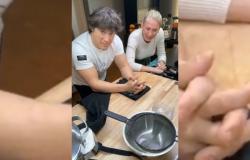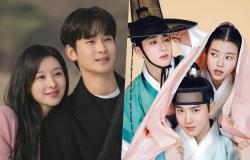
For many years Imanol Subiela Salvo, who writes in the supplement Radar of Page 12, He was a freelance journalist. That trained him to tune your ear in search of good stories and in his years of profession he found jewels in unusual ways. One night, at Amerika Disco, he learned from his friend Santiago Villanueva, artist and curator, about the robbery at the National Museum of Fine Arts that occurred on December 26, 1980. That was the kick-off to start writing. Coup in the museum. The story of the largest theft of works of art in Argentina during the last military dictatorship (Planet).
That morning they stole 16 impressionist paintings from the Mercedes Santamarina collection – only three were recovered – and during the investigation there were illegal detentions and torture that led to suicides. The case was never solved. There is no conclusion but there are several hypotheses; The officer indicates that it would be a robbery orchestrated by the dictatorship (material responsibility would have remained in the hands of Aníbal Gordon’s gang) to get weapons in Taiwan before the Malvinas war.
“In 2020, when it was inaugurated in the MNBA the exhibition by Santiago Villanueva and Paula Castro (What happened on Christmas 1980) I had just quit my job, I was thinking about how to get money and I remembered this story. First I made an article for the magazine catopard, but while I was writing it I realized that it was a big story and full of twists and turns. The 45 thousand characters were not enough to account for everything that I was interested in including, so I decided to make the book,” recalls the author in dialogue with Page 12. The note was published in December 2020 for the 40th anniversary of the robbery and in January it began working with its editor, Ana Wajszczuk.
–Coup in the museum It is a journalistic investigation but it has a structure typical of the classic detective novel, right?
-Yeah. The first idea of structure was quite different from what it finally had: they were longer chapters designed from the classic police, that is, presenting the crime at the beginning, maintaining the intrigue and developing a plot to reveal the enigma. It was about sustaining the tension until the end and also the question about the fate of the works. This is not a purely informative text, I loved the idea of working on a journalistic investigation with a fictional structure. At the end of the process, Mercedes Halfon helped me: she suggested that I write shorter chapters that would function as little scenes within the story of the crime.
–Several characters appear but you decide to profile some. ¿What was the criterion?
-There was a initial difficulty: This story did not have characters who maintained a leading role from 1980 to 2005. Many people come and go from the story. The characters I was interested in profiling were those who drove the plot and were able to function alone outside of the story. That’s why I chose Mercedes Santamarina, Nelly Arrieta de Blaquier, Jorge Glusberg, Norberto Oyarbide and Julian Radcliffe. There are others like Samuel Paz Pearson who are also important but did not have that extra narrative. Oyarbide is stunning, Radcliffe looks like an English super spy, Glusberg was very colorful and there was good archival material.
About that file, mention some fundamental pieces: Passport to oblivionbook by the documentary filmmaker Patricia Martin Garcia which was the first important background information on the case, of great journalistic and emotional value because it interviewed several Museum employees who by the time Subiela began writing had already died; the material that Villanueva and Castro contributed after their exhibition; the journalistic notes (several belong to this newspaper) that his student Tomás Viola managed to track down in the newspaper archives and that led him to a forgotten book where the journalist Guillermo Kelly narrates Gordon’s confession claiming responsibility for the robbery; and the box with correspondence between officials of the dictatorship that a CONICET researcher generously gave him. This puzzle houses several theories, but the writer chooses to support the Justice hypothesis because he does not have sources that support others.
–In the introduction you ask about the cultural practices of the dictatorship. ¿What is your hypothesis in relation to that?
–The dictatorship used this orchestrated robbery as excuse to repress. In an interview, the former director of Museums said that “the police acted like this because it had been discovered that in the museum there was a problem of homosexuality that had to be corrected.” The photographer Horacio Mosquera was persecuted for being linked to union activity and Samuel Paz Pearson, who belonged to the aristocracy, was kidnapped and tortured because he was a troll. The dictatorship used theft as an excuse to carry out a repressive plan that was programmatic, savage and voracious, They went against people who had nothing to do with the robbery. There was a chase orchestrated by horrible people like Judge Laura Damianovich de Cerredo, linked to the Pozo de Banfield clandestine center.
Coup in the museum allows us to reflect on the repressive plan of the dictatorship and the ways in which public assets were used, but it also opens up questions regarding what Argentinianness means and why for so long it was associated with the Buenos Aires elite. “Sometimes people think that museums are boring, inert places, where nothing happens and you have to be silent. I think they are dynamic spaces and the uses that can be given to them are multiple. Museums shape our way of imagining. If I tell someone to imagine Argentine things, they will probably mention the gaucho, the mate, the cow. But that has nothing to do with a person who lives in Jujuy or in the South. “I am from Trelew and there are sheep there, but when we think about Argentina, no one would think of a sheep.”
Villanueva maintains that the MNBA could be called National Museum of Taste of the Porteña Aristocracy and the author agrees: “I think that as viewers we must fight for those spaces and reconfigure that imagery.” Regarding current cultural management, he says: “All governments have their cultural uses, but with a government like the one we have today I ask myself these questions again. Today they don’t want you to imagine, that you have a good time or that you escape into fiction but that you be hyper-productive and speculate with the dollar. They want to discourage us, so the resistance is in the imagination. It is a moment when we must defend cultural institutions more than ever”.





